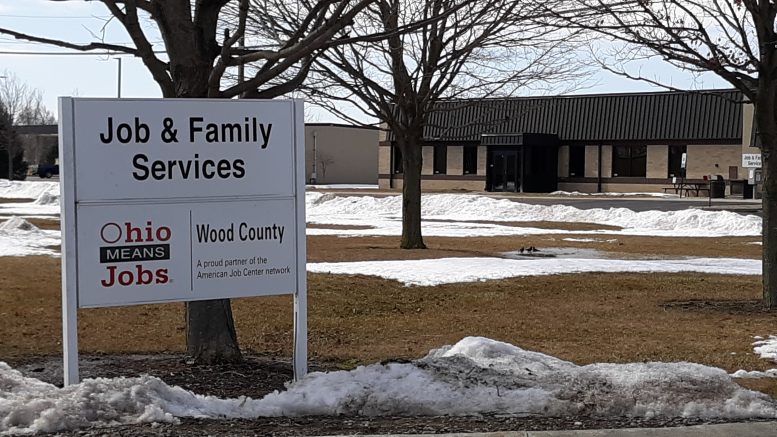By JAN LARSON McLAUGHLIN
BG Independent News
Requests for housing help in Wood County saw an increase after COVID hit. But officials know an even deeper need is coming if the national moratorium on evictions is not extended when it is set to expire at the end of March.
Wood County Job and Family Services officials presented their concerns last week to the county commissioners.
WCJFS is where many local residents turn for help with housing and utilities expenses.
In 2019, the office saw 1,644 requests for housing assistance for problems such as homelessness, help with back rent or utilities, and requests for subsidized housing.
Last year, that number increased to more than 2,300 requests for help.
The recently passed American Rescue Plan will help – providing nationwide $40 billion in rental and mortgage assistance which includes $21.55 billion for emergency rental assistance, $5 billion for emergency housing vouchers, $750 million for tribal housing needs and $100 million for rural housing.
But even before COVID, affordable housing was an issue in Wood County. Housing takes a big chunk of many household incomes, according to WCJFS Director Dave Wigent and employment and support services supervisor Shannon Fisher.
For an individual to afford a one-bedroom apartment at fair market rent in Wood County, that person would have to work a full-time job making at least $11.50 an hour, Fisher said. If a single parent with a child wanted to rent a two-bedroom apartment, they would have to have a job paying at least $15 an hour.
However, that $15 an hour wage makes a parent over-income for child care support.
“There’s a deep flaw that exists in social services,” Wigent said.
In the business, it’s called “the cliff” – which “rewards” people for getting paid more with the loss of social services that are still likely needed, he said. “It’s a deep flaw in the social services net.”
That includes the loss of food stamps or SNAP assistance, Fisher said.
The federal stimulus money is definitely helping those most in need, Wigent said. But that help is masking the extent of the needs – and it will come to an end at some point.
“I feel the numbers we are dealing with right now are under-reporting the issue,” he said. “There will come a reckoning sometime in the system.”
When COVID hit Wood County, it didn’t take long for families to feel the effect. In early April of 2020, more than 500 Wood County families and individuals filed for help paying their rent and utilities.
Wigent explained then that when the economy crashes, it’s the population served by his agency that feels the drop most deeply.
“The effect of COVID-19 on the economy is catastrophic,” Wigent said last April. “When we see the economy tanking, we know these people are disproportionately affected by this.”
Wigent said he had never seen such a flood of requests for assistance with rent and utility payments.
“It’s obviously a time of national emergency,” he said.
And if the federal moratorium on evictions expires, Fisher expects more requests for help.
“We could see more people facing full evictions,” she said.

